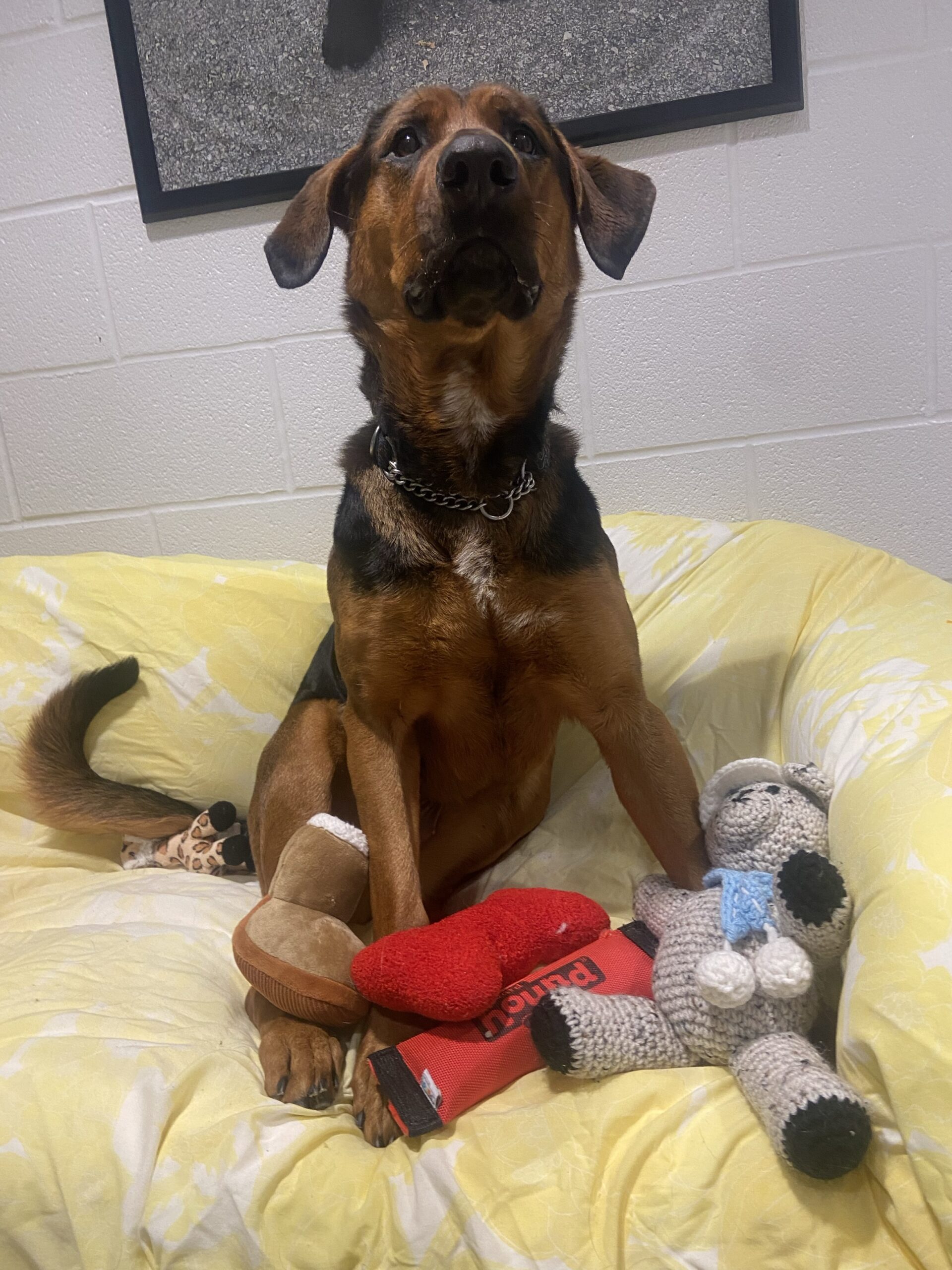Tips to overcome your dog’s resource guarding
by Ontario SPCA and Humane Society | Dog Care | March 31, 2025

Resource guarding, also known as “possessive aggression,” occurs when a dog displays protective behaviours over items they consider valuable. This behaviour can include food, toys, or even people. It’s a natural behaviour rooted in their ancestral need to protect resources. While some dogs may have a genetic predisposition to resource guarding, it can also be learned through experiences.
Resource guarding becomes problematic when dogs exhibit these behaviours towards people or other pets in a home or other environments. It’s crucial to work with a qualified trainer or certified behaviour consultant to modify resource guarding behaviours e ectively. Remember, resource guarding stems from fear and dogs do not comprehend why their behaviour may be inappropriate. It can worsen in the presence of other animals or unfamiliar people.
Signs include:
- Stiff body posture or hovering over an item
- Whale eye (whites of the eyes showing)
- Ears pinned back or to the side
- Showing teeth or lip licking
- Growling, snarling, or snapping
- Moving to block access to the item or food
When guarding food, dogs may eat quickly, snatch food, or jab at their bowl. With toys or other items, they may hide or move away with the item, pin it down, or cover it.
The “do’s” and “don’ts”:
- Don’t: attempt to take items from your dog when they display guarding behaviours. Instead, “trade up” by o ering something of higher value and then safely remove the item.
- Don’t: punish your dog for resource guarding. Instead, try to understand that they are fearful, not malicious, when displaying these behaviours.
- Do: feed your dog away from people or other animals and avoid putting your hands near their food while they eat. If necessary, toss high value treats into their bowl from a distance.
- Do: keep known or suspected guarded items out of reach to prevent conflicts.
Understanding and addressing resource guarding in dogs requires patience and understanding. By working closely with a certified behaviour consultant, you can develop strategies to modify these behaviours positively. Remember, resource guarding is rooted in fear, and creating a safe and supportive environment for your dog is essential. With proper guidance and empathy, you can help your dog feel more secure and reduce instances of resource guarding.
If this information was helpful, please help us continue to educate about pet health and well-being by making a donation. As a registered charity that does not receive annual government funding, the Ontario SPCA and Humane depends on the generosity of donors to change the lives of animals in need.
Categories
Testimonial
Thank you for your dedication
Thank you for your dedication to helping the animals. Every animal deserves a loving home and to be treated royally. Just imagine a day without animal cruelty. What a wonderful day that would be!